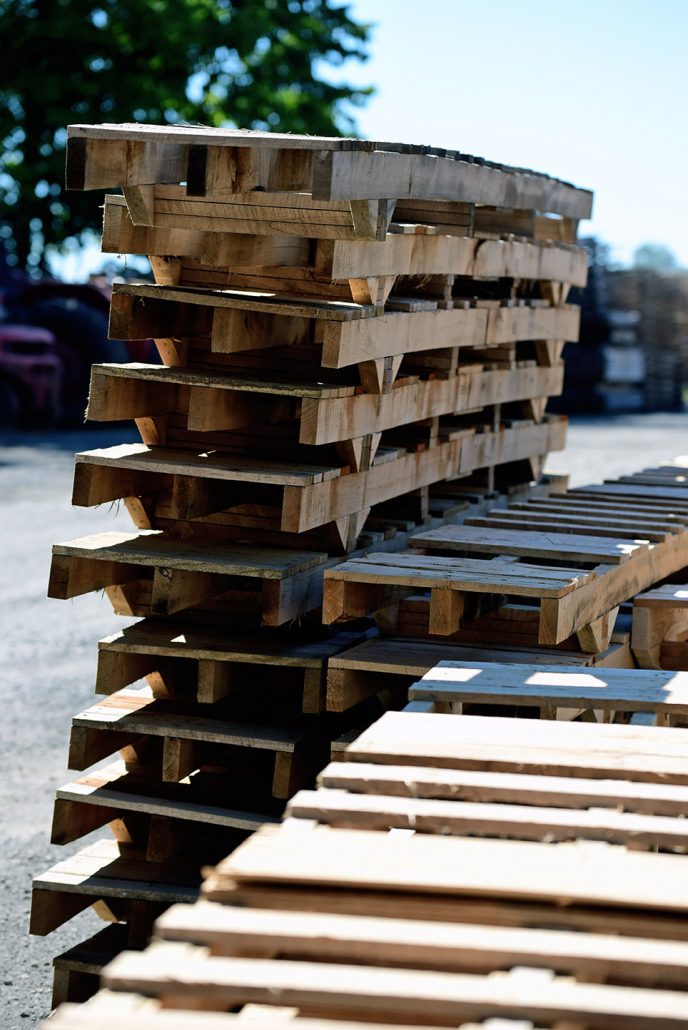In today's world, the journey of goods from the manufacturing plant to your front door involves a complicated framework of logistics and delivery. At the core of this procedure lies a ostensibly straightforward yet exceptionally vital element: pallets. These metal platforms are vital in the protection, holding, and transportation of products across different sectors. Without them, the efficiency and security of the supply chain would be seriously compromised.
Pallets serve numerous purposes that go beyond just supporting heavy loads. They provide a secure base for piling and storing merchandise, minimizing the risk of damage during transit. Additionally, pallets simplify the loading and loading process, allowing for quicker turnaround times in distribution centers. As customers, we often neglect the role that pallets have in bringing our goods, but their contribution on the preservation of products cannot be ignored.
Comprehending Pallets
These pallets are vital components in the logistics industry, providing a stable base for holding and shipping items. They come in various designs to accommodate different types of products. The most common types include solid pallets, block-style pallets, and stringer-type pallets. Solid wood pallets are robust and can carry significant weights, while block-style pallets offer adaptability and convenient use due to their multi-directional accessibility. Stringer-style pallets are more lightweight and often used for medium weights, making them a popular choice for many businesses.
The materials used in pallet construction play a major role in their functionality and longevity. Timber has been the traditional material for pallets due to its strength and ready supply. However, plastic-type pallets have increased in use for their durability to moisture and chemicals, making them ideal for the agriculture and medicine industries. Metal-type pallets are another option, offering high resilience and suitability for large weights, though they are typically costlier and less lightweight.
Picking the appropriate pallet kind and substance depends on the specific needs of the goods being moved or kept. Factors such as the mass of the load, the surroundings in which the pallet will be utilized, and any standards are important in making this decision. Understanding these differences ensures that pallets fulfill their function of protecting items throughout their transport from factory to retail location.

The Function of Palletized Solutions in Supply Chain Effectiveness
Pallets serve as the cornerstone of today's supply chains, playing a key role in the holding and movement of goods. By providing a uniform platform for storing products, they improve the ease of transfer throughout warehouses. This standardization helps reduce handling time and minimizes the risk of damage during shipment, ensuring that goods arrive at their destinations in optimal condition.
Furthermore, pallets contribute to optimizing storage space and improving inventory management. They allow for vertical stacking and efficient storage in shelving units, enabling warehouses to utilize space more efficiently. This optimized space usage not only leads to reduced storage costs but also improves the speed at which products can be retrieved and shipped, ultimately accelerating the entire supply chain process.
Moreover, the use of these systems facilitates superior tracking and management of inventory. With built-in barcodes or RFID tags, these units can be easily tracked during various stages of the supply chain. This real-time tracking allows companies to keep track of stock levels, minimize errors in fulfilling orders, and respond swiftly to changes in demand. Ultimately, these systems enhance overall supply chain efficiency by simplifying processes and enhancing product distribution from manufacturers to end users.
Best Practices for Pallet Usage and Safety
To ensure the efficient use of pallets, it's essential to select the suitable type of pallet for your specific needs. Various materials, such as wood, polymer, or steel, all have unique advantages and suitable applications. For example, wooden pallets are often chosen for their strength and affordability, while polymer pallets are favored for their resilience and resistance to humidity. When selecting a pallet, consider the load capacity, the setting where it will be used, and any particular hygiene requirements, especially in the food and medicinal industries.
Proper handling and stacking of pallets is crucial for maintaining safety in the workplace. Workers should be trained in proper lifting techniques to avoid injuries when moving pallets. Moreover, stacking Tulsa is important to prevent toppling and instability. It is advisable to limit the height of stacked pallets to maintain balance and ensure they do not exceed the manufacturer's recommendations. Frequent inspections should be conducted to check for any damage or deterioration, as damaged pallets can jeopardize safety and product integrity.
Finally, maintaining a clean and systematic storage area for pallets contributes significantly to efficiency and safety. Designate specific locations for empty and loaded pallets to minimize clutter and confusion. Clear routes should be established to facilitate easy movement around the storage area. Additionally, implementing a system for monitoring pallet usage can assist avoid loss or misplacement, ensuring that all pallets are used effectively and safely while improving the overall logistics process.
